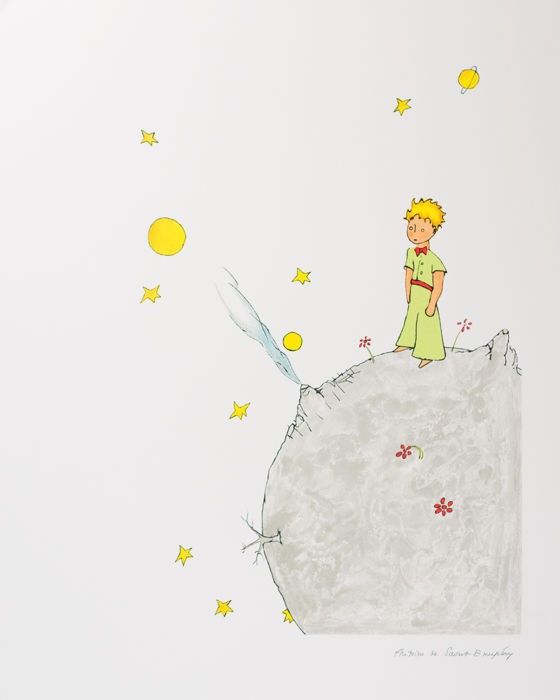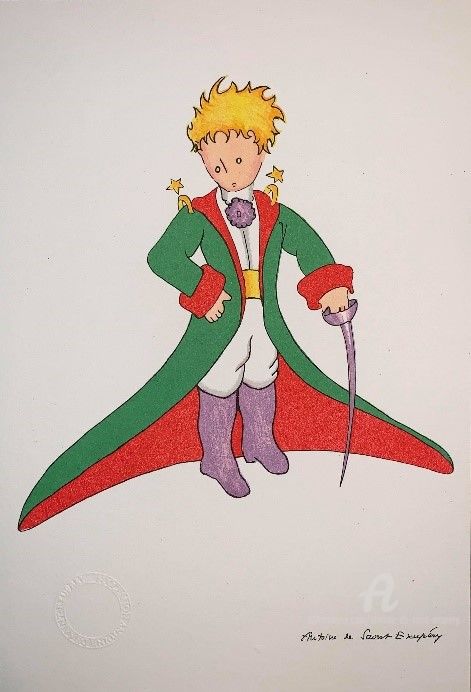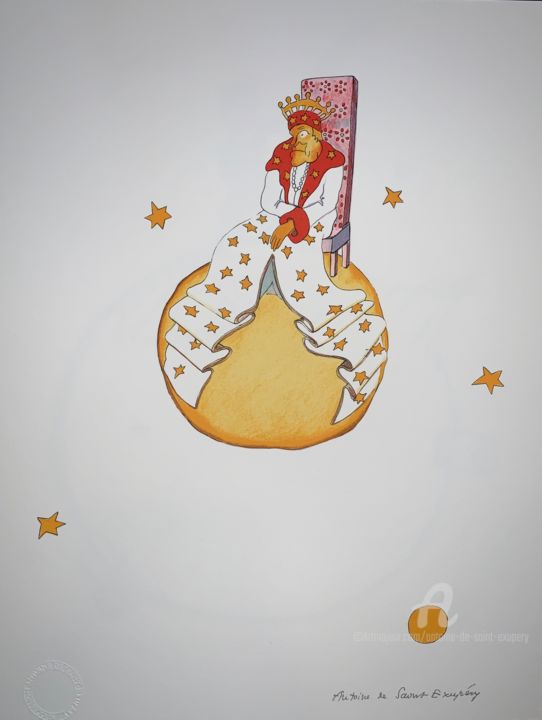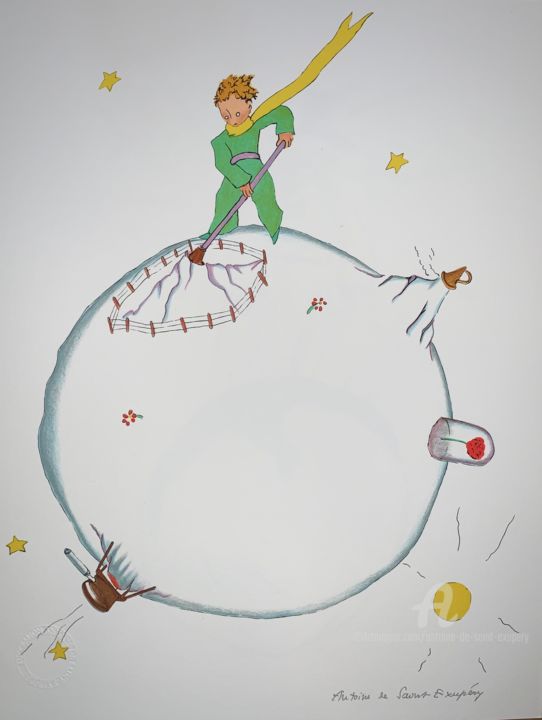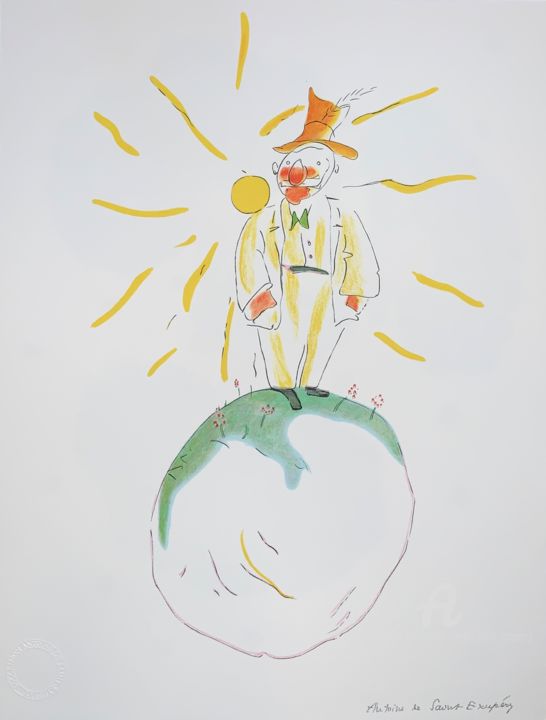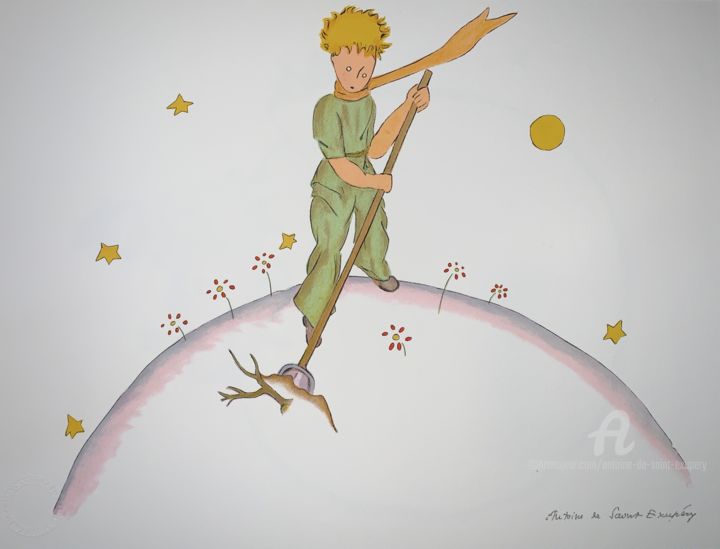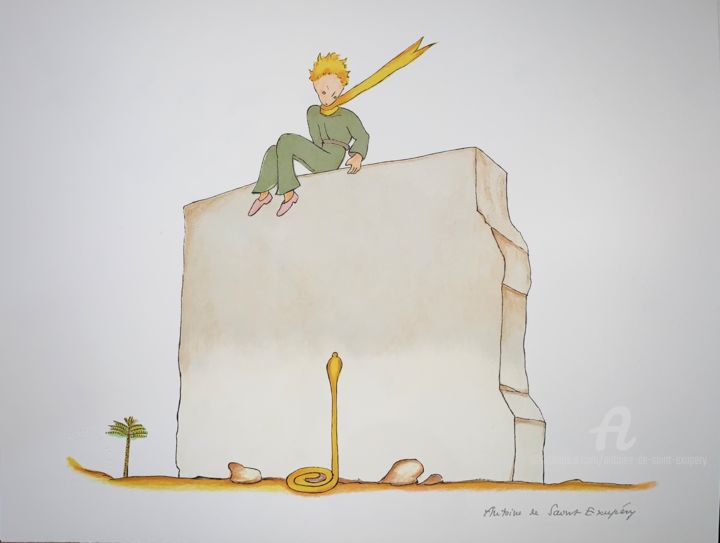Antoine de Saint-Exupéry, born on June 29, 1900, in Lyon, is an iconic figure in French literature, renowned both for his skills as a pilot and for his literary works. A pilot, writer, poet, and journalist, he left a lasting impact on his era with his poetic and profound writings, the most famous of which is The Little Prince, a work that has touched generations of readers worldwide. Before World War II, Saint-Exupéry had a successful career as a commercial pilot, flying airmail routes across Europe, Africa, and South America. During the war, he joined the French Air Force, first serving the French Third Republic and later the Free French Forces, undertaking reconnaissance missions despite his advanced age and declining health. His dedication, both in the skies and in his writings, earned him numerous accolades, including the Legion of Honour and the Prix Femina. Disappearing during a flight over the Mediterranean on July 31, 1944, his life and work continue to captivate, symbolizing the spirit of adventure and the search for the essential.
Artist Biography: Antoine de Saint-Exupéry
Antoine de Saint-Exupéry, a name synonymous with literary brilliance and aerial adventure, was born on June 29, 1900, in Lyon, France. Best known for his beloved novella The Little Prince ("Le Petit Prince"), Saint-Exupéry's works have touched the hearts of readers worldwide, transcending age and language barriers. His unique blend of poetic narrative and philosophical insight has made The Little Prince one of the most translated and best-selling books in history. Saint-Exupéry's passion for aviation began at a young age, ultimately shaping both his life and his literary voice. His career as a pilot took him to the skies over the Sahara Desert, South America, and Europe, where he worked for pioneering French aviation companies like Aéropostale. These experiences served as a rich source of inspiration for his writing, particularly in works such as Wind, Sand and Stars ("Terre des hommes"), which earned him the prestigious Prix Femina in 1939.
During World War II, Saint-Exupéry's life took a dramatic turn as he joined the French Air Force, flying dangerous reconnaissance missions. It was during this tumultuous period that he penned The Little Prince, a timeless tale that explores themes of love, friendship, and the human condition through the eyes of a young, otherworldly prince. Tragically, Saint-Exupéry's life was cut short when he disappeared during a reconnaissance mission over the Mediterranean Sea in 1944. Despite his untimely death, his legacy endures through his literary masterpieces, which continue to inspire and enchant readers across the globe. His life and work are commemorated in numerous ways, including exhibitions, memorials, and even currency, ensuring that the spirit of Antoine de Saint-Exupéry remains ever-present in the world of literature and beyond.
Le Petit Prince
Le Petit Prince, the beloved novella by Antoine de Saint-Exupéry, transcends the boundaries of children's literature, weaving a timeless tale that speaks to readers of all ages about the essence of life and human nature. Published in 1943, this poignant narrative follows the journey of a young prince who travels from planet to planet, encountering a series of whimsical and flawed adults, each embodying different aspects of the human condition. Through the prince's encounters—with a king who commands the impossible, a vain man who craves admiration, and a lonely fox who teaches the prince the true meaning of love—the story gently unfolds profound truths about loneliness, friendship, love, and loss. Saint-Exupéry, drawing from his experiences as a pilot, imbues the tale with a sense of longing and introspection, as the narrator, stranded in the Sahara Desert, reflects on his fleeting friendship with the prince. The novella's delicate illustrations and poetic prose have captivated readers worldwide, making Le Petit Prince one of the most translated and best-selling books in history. Its layered storytelling invites readers to see with their hearts, rather than their eyes, reminding us that the most important things in life are often invisible and intangible. As the prince’s journey concludes with his mysterious departure, leaving the narrator and the readers with a bittersweet sense of wonder, the tale lingers in the imagination, resonating as a gentle yet powerful meditation on the innocence and complexity of the human spirit.
Le Petit Prince sur la Planète (2009) by Antoine De Saint-Exupéry
Antoine De Saint-Exupéry, Le Petit Prince sur la Planète, 2009. Printmaking, 31cm x 40cm.
Le Petit Prince sur la Planète (2009) by Antoine de Saint-Exupéry captures the tender essence of a beloved character, forever etched in the memories of those who cherish his tale. In this delicate lithography, the Little Prince stands firm on his small planet, a solitary figure amidst a universe brimming with stars. His leg, poised on a shovel, presses gently into the soil, as if urging his tiny world to grow, to flourish. Behind him, the moon and stars, softly tinted in yellow, glow against the purity of a white background, symbols of distant dreams and the silent beauty of the night sky. The planet beneath his feet, alive with sprouting plants, reflects the care he once poured into his rose, the love and attention he gave to even the smallest of things. Though the artwork is unframed, it feels boundless, as if the Prince’s world could spill over into our own, inviting us into his universe. This limited edition lithography, one of only 300, is a tender homage to the eternal journey of the Little Prince—a journey not just across planets, but through the heart's deepest emotions. Here, the simplicity of the lines and the gentle colors evoke a profound sense of nostalgia, reminding us that the most important things are, indeed, invisible to the eye.
Iconic Works
Antoine de Saint-Exupéry, celebrated as one of the most distinguished French writers and aviators of the 20th century, left an indelible mark on both literature and aviation. His most famous work, Le Petit Prince (The Little Prince), has become a timeless classic, cherished across generations for its poetic exploration of love, loss, and the human condition. However, Saint-Exupéry's literary prowess extends far beyond this beloved novella. His earlier works, such as Vol de Nuit (Night Flight) and Courrier Sud (Southern Mail), reflect his deep connection to aviation, depicting the perilous yet exhilarating world of early airmail pilots. In Terre des hommes (Wind, Sand and Stars), often hailed as his masterpiece, Saint-Exupéry offers a profound meditation on the human spirit, drawing from his own experiences as a pilot to explore themes of camaraderie, resilience, and the search for meaning. His wartime reflections, captured in Pilote de guerre (Flight to Arras) and Lettre à un otage (Letter to a Hostage), further reveal his philosophical depth and his unwavering belief in the dignity of the human spirit, even amidst the horrors of war. Posthumously published works like Citadelle and Wartime Writings, 1939-1944 continue to offer readers insight into Saint-Exupéry's rich inner world, filled with contemplation on leadership, morality, and the role of the individual in society. His writings, including the collections Airman's Odyssey and A Guide for Grown-ups: Essential Wisdom from the Collected Works of Antoine de Saint-Exupéry, provide a treasure trove of wisdom and a unique perspective on life, grounded in his extraordinary experiences as a pioneering aviator and a sensitive, introspective writer. Saint-Exupéry's legacy endures not only through the lasting appeal of El Principito (The Little Prince), but also through his broader body of work, which continues to inspire readers with its profound reflections on humanity and the beauty of the world seen from the skies.
Exhibition History
One of the most significant tributes is the permanent exhibit at the French Air & Space Museum in Le Bourget, Paris, which covers 300 square meters and was inaugurated in 2006 to coincide with the anniversary of Saint-Exupéry's birth. This exhibit features personal artifacts, including original notebooks, drawings, letters, and remnants of the P-38 aircraft he flew on his final mission. In Tarfaya, Morocco, near the Cape Juby airfield where Saint-Exupéry served as an Aéropostale pilot, the Antoine de Saint-Exupéry Museum was established to honor his contributions. Internationally, theme museums and exhibitions dedicated to Saint-Exupéry and The Little Prince can be found in places such as Hakone, Japan, and Gyeonggi-do, South Korea, as well as in São Paulo, Brazil, where a massive exhibition at the Oca Art Exhibition Centre explored the themes of his works through immersive displays. In 2011, Toulouse, France, hosted a major exhibition showcasing artifacts from Saint-Exupéry's life as an airmail pilot, while in 2014, New York City's Morgan Library & Museum celebrated the 70th anniversary of The Little Prince with a comprehensive exhibition of manuscripts, drawings, and watercolors. His influence also extended to the 1967 International and Universal Exposition in Montreal, where his memoir Terre des hommes inspired the central theme of the world's fair. Additional tributes include museums in Russia, Canada, and Brazil, a peak in Argentina named Aguja Saint Exupery, and various philatelic honors across multiple countries.
Antoine de Saint-Exupéry's legacy is one of extraordinary depth, seamlessly intertwining the realms of literature and aviation. His works, infused with poetic reflection and a deep understanding of the human condition, continue to resonate across generations. Whether through the universal appeal of The Little Prince or the profound insights found in his other writings, Saint-Exupéry has left an indelible mark on the world, inspiring readers to look beyond the ordinary and embrace the unseen. His life, tragically cut short, remains a testament to the spirit of exploration and the relentless pursuit of meaning, both in the skies and in the pages of his timeless literature. Through exhibitions, memorials, and the ongoing celebration of his works, the essence of Antoine de Saint-Exupéry endures, reminding us all of the power of imagination, the beauty of the world, and the enduring quest for the essential truths of life.



 Selena Mattei
Selena Mattei
